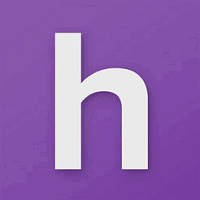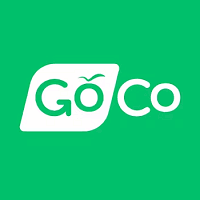Description

Exenta HRMS

KServeHRMS
Comprehensive Overview: Exenta HRMS vs KServeHRMS
Exenta HRMS
a) Primary Functions and Target Markets
Primary Functions: Exenta HRMS offers a comprehensive suite of human resource solutions designed to automate and enhance various HR functions. Its primary features include:
- Talent Acquisition: Streamlines recruitment processes with tools for posting job openings, screening candidates, and managing interviews.
- Employee Management: Maintains employee records, handles promotions, transfers, and exits, and manages employee lifecycle.
- Attendance and Leave Management: Automates attendance tracking and leave application processes.
- Payroll Management: Manages payroll calculations, compliance, and financial aspects of employee compensation.
- Performance Management: Provides tools for setting goals, performance reviews, and feedback systems.
- Training and Development: Offers modules for employee training programs, skill assessments, and development planning.
- Self-Service Portal: Allows employees to update personal information, view payslips, and manage benefits.
Target Markets: Exenta HRMS primarily targets small to medium-sized enterprises (SMEs) and mid-level businesses across various industries like IT, manufacturing, services, healthcare, and education, seeking to optimize their HR operations through digital means.
b) Market Share and User Base
Exenta HRMS possesses a growing market share within the HRMS sector, particularly strong among SMEs due to its cost-effectiveness and scalable options. However, precise numbers on market share and user base are not publicly disclosed, which is typical for many HR technology providers unless they are publicly traded companies.
c) Key Differentiating Factors
- Customization: Exenta HRMS is known for its customizable modules, allowing businesses to tailor the platform to their specific needs.
- User-Friendly Interface: The platform is reputed for its intuitive and easy-to-navigate interface, facilitating quick adoption among users.
- Value for Money: Offers competitive pricing options catering to budget-conscious SMEs.
KServeHRMS
a) Primary Functions and Target Markets
Primary Functions: KServeHRMS is another robust human resource management system offering features such as:
- Core HR: Centralized employee database for managing employee records and HR processes.
- Attendance and Leave Management: Fully automated system for tracking attendance and managing employee leave entitlements.
- Payroll Processing: Facilitates efficient and accurate payroll processing with compliance checks.
- Performance Management: Tools for managing employee appraisals, feedback, and performance metrics.
- Recruitment Solutions: Assists in managing end-to-end recruitment processes including onboarding.
- Employee Self-Service: Allows employees to access and update their personal information, submit leave requests, and review HR policies.
Target Markets: KServeHRMS is aimed at medium to large-sized enterprises, including sectors like IT, finance, retail, and manufacturing, focusing on organizations that need a scalable HR solution capable of handling complex HR functions across multiple locations.
b) Market Share and User Base
KServeHRMS has established a presence among larger enterprises, although detailed statistics on market share and user base specifics are typically not available. It is more prevalent among businesses with more complex HR needs and higher employee counts.
c) Key Differentiating Factors
- Scalability: Known for its ability to manage and scale with large enterprises, making it a popular choice for businesses with growing HR demands.
- Integration Capabilities: Strong integration capabilities with other enterprise systems like ERP and CRM platforms.
- Advanced Analytics: Offers in-depth analytics and reporting features that support strategic decision-making in HR.
Comparison Summary
In summary, while both Exenta HRMS and KServeHRMS offer comprehensive HR solutions, they target slightly different markets based on company size and complexity of needs. Exenta HRMS is more SME-focused with an emphasis on customization and cost-effectiveness, while KServeHRMS caters to larger enterprises, providing robust scalability and integration features. Each has its unique strengths that appeal to different segments within the HR technology landscape.
Contact Info

Year founded :
2006
+91 95006 62295
Not Available
India
http://www.linkedin.com/company/exenta-hrms

Year founded :
2003
+91 44 4261 5064
Not Available
India
http://www.linkedin.com/company/kservehrms
Feature Similarity Breakdown: Exenta HRMS, KServeHRMS
When comparing Exenta HRMS and KServeHRMS, both feature-rich human resource management systems, it's useful to break down their similarities and unique points as well as assess their user interfaces. Information on these platforms may vary, and for precise details, it's advisable to explore the platforms' most current documentation or demos.
a) Core Features in Common
-
Employee Information Management: Both platforms provide comprehensive management of employee data, including personal details, job information, and company-specific data.
-
Payroll Management: Seamless processing of payroll activities with integrations to handle tax computations, deductions, and statutory compliance.
-
Attendance and Leave Management: Capabilities for tracking employee attendance, managing leave requests/approvals, and calculating attendance-based inputs for payroll.
-
Recruitment and Onboarding: Support for automating recruitment workflows, tracking candidate applications, and facilitating smooth onboarding processes.
-
Performance Management: Tools for evaluating employee performance, setting objectives, facilitating appraisals, and providing feedback.
-
Training and Development: Options to manage employee training programs, track skill development, and ensure compliance with required competency levels.
-
Self-Service Portals: Employee and manager self-service portals that allow for updates and requests regarding personal information, attendance, and other HR-related activities.
b) Comparison of User Interfaces
-
Exenta HRMS: Generally, Exenta HRMS is known for a user-friendly interface with customizable dashboards that can provide real-time analytics and insights. The design tends to focus on intuitiveness and ease of navigation, aimed at streamlining HR processes.
-
KServeHRMS: The interface is clean and function-focused, aimed at reducing complexity for users. It emphasizes process automation and can be tailored to align with the workflow and branding requirements of an organization.
Though both platforms strive for similar user-centered designs, differences may arise in stylistic elements, layout, and ease of use, depending on user feedback and specific version updates.
c) Unique Features
-
Exenta HRMS:
- AI-Powered Insights: Exenta may offer advanced analytics with AI capabilities, providing predictive insights into HR data and workforce trends.
- Mobile App Accessibility: Features robust mobile app support that offers most functionalities on the go, appealing to companies with remote or mobile employees.
-
KServeHRMS:
- Customization and Integration: Known for its high degree of customization and integration capabilities with other enterprise systems, making it versatile for diverse business environments.
- Industry-Specific Modules: May offer industry-specific solutions, catering to niche requirements like education, healthcare, and manufacturing, which can be tailored distinctively.
These differences can be significant depending on the specific needs of an organization and the type of users interacting with the system. Companies considering these platforms should conduct a detailed evaluation and possibly request demos to ascertain the best fit for their operations.
Features

Leave Management
Payroll Processing
Employee Management
Performance Management

Talent Management
Reporting and Analytics
Employee Management
Payroll and Compensation
Learning and Development
Best Fit Use Cases: Exenta HRMS, KServeHRMS
To effectively understand the best use case scenarios for Exenta HRMS and KServeHRMS, it's important to analyze their features, capabilities, and target markets. Here's a detailed breakdown:
Exenta HRMS
a) Best Fit for Exenta HRMS:
-
Medium to Large Enterprises:
- Exenta HRMS is well-suited for medium to large-sized companies that require comprehensive HR management solutions. Its robust set of features supports complex HR processes across various departments.
-
Businesses Seeking Customization:
- Companies that look for customizable solutions will find Exenta HRMS appealing. It offers flexibility to tailor the software as per unique organizational needs, making it adaptable to various business processes.
-
Industries with Complex Compliance Requirements:
- Industries like healthcare, finance, and manufacturing where regulatory compliance is critical can benefit from Exenta’s ability to manage complex labor laws and compliance requirements efficiently.
-
Organizations Focusing on Talent Management:
- If a business emphasizes talent acquisition and management, Exenta HRMS offers specialized tools for recruitment, onboarding, performance management, and employee development.
-
Global Enterprises:
- Companies with a global presence can take advantage of Exenta’s multilingual capabilities and support for multiple currencies, making it suitable for multinational operations.
KServeHRMS
b) Preferred Scenarios for KServeHRMS:
-
Small to Medium Businesses (SMBs):
- KServeHRMS is ideal for small to medium-sized businesses looking for cost-effective, user-friendly HR solutions that cover essential HR functions effectively.
-
Startups Needing Quick Implementation:
- Startups and rapidly growing companies that need a quick and easy-to-deploy HR solution will find KServeHRMS beneficial due to its straightforward setup and intuitive interface.
-
Industries with Less Complex HR Needs:
- Industries such as retail or hospitality, where HR requirements may not be as complex or regulated, can effectively use KServeHRMS to handle their HR processes smoothly.
-
Project-Based Organizations:
- For companies heavily reliant on projects, KServeHRMS provides tools for time tracking, resource allocation, and project-based HR management, aligning human resources with project goals.
-
Cost-Conscious Enterprises:
- Businesses that need to manage budgets tightly will appreciate KServeHRMS for its affordability and efficient handling of standard HR tasks.
d) Catering to Different Industry Verticals or Company Sizes:
-
Exenta HRMS:
- Industry Verticals: Primarily targets healthcare, finance, manufacturing, and other sectors with complex HR and compliance needs. Its comprehensive functionalities cater to industries requiring detailed time tracking, payroll, and compliance management.
- Company Sizes: Best for medium to large enterprises due to its feature-rich nature, which may be overwhelming for smaller organizations without advanced HR needs.
-
KServeHRMS:
- Industry Verticals: Suitable for retail, hospitality, education, and other industries where HR demands are straightforward and can be managed with a more generalized approach.
- Company Sizes: Designed for small to medium enterprises, providing essential HR capabilities without the complexity and cost of large-scale HR solutions.
Overall, the choice between Exenta HRMS and KServeHRMS hinges on the size of the company, the complexity of its HR needs, and the industry-specific requirements it must meet. Exenta HRMS is tailored for larger organizations with robust, customizable needs, whereas KServeHRMS provides a straightforward, cost-effective solution for smaller to medium-sized businesses with more general HR requirements.
Pricing

Pricing Not Available

Pricing Not Available
Metrics History
Metrics History
Comparing teamSize across companies
Conclusion & Final Verdict: Exenta HRMS vs KServeHRMS
When it comes to choosing between Exenta HRMS and KServeHRMS, organizations must carefully weigh their specific needs and priorities to determine which Human Resource Management System offers the best overall value. Below is a comprehensive conclusion and verdict based on various factors such as features, ease of use, scalability, customer support, integration capabilities, and pricing.
a) Best Overall Value
KServeHRMS generally offers the best overall value for smaller to medium-sized enterprises prioritizing flexibility and affordability. It provides a comprehensive suite of HR modules that can be tailored to suit the needs of growing businesses, accompanied by a competitive pricing model.
b) Pros and Cons
Exenta HRMS
Pros:
- Comprehensive Feature Set: Exenta HRMS offers extensive functionality, covering a wide range of HR processes from recruitment to performance management.
- Scalability: Ideal for larger organizations as it efficiently handles complex HR needs and can grow with the business.
- Customizable: High level of customization options allowing alignment with diverse organizational processes.
Cons:
- Complexity: The extensive feature set can lead to a steeper learning curve, requiring more time for staff to adopt.
- Pricing: Typically, the cost might be higher, making it less appealing for smaller businesses with budget constraints.
KServeHRMS
Pros:
- User-Friendly Interface: Known for its intuitive design, reducing the learning curve for new users.
- Affordability: Offers competitive pricing that is attractive to startups and small to medium-sized businesses.
- Integration Capabilities: Offers solid integration options with other business software systems, ensuring smooth interoperability.
Cons:
- Limited Advanced Features: While suitable for smaller organizations, it may lack some advanced functionalities desired by large enterprises.
- Scalability Concerns: May not be as scalable for larger organizations with highly complex HR processes compared to Exenta HRMS.
c) Recommendations
-
Assess Your Business Size and Complexity Needs: Larger enterprises with complex HR needs may benefit more from Exenta HRMS due to its scalability and comprehensive features. In contrast, smaller organizations should consider KServeHRMS given its ease of use and budget-friendly options.
-
Trial and Demo: Both platforms likely offer trial versions or demos. It is advisable to take advantage of these to see which interface and feature suits your organization best.
-
Consider Future Growth: Organizations expecting rapid growth should consider their future needs. If exponential growth is anticipated, Exenta HRMS might be the better long-term investment despite the higher initial cost.
-
Evaluate Integration Requirements: Assess existing software systems in your organization and select the HRMS that offers the smoothest integration with your current tools and processes.
In conclusion, both Exenta HRMS and KServeHRMS bring unique strengths to the table, and the best choice ultimately depends on the specific needs and future trajectory of the organization. For smaller businesses seeking a cost-effective solution with essential features, KServeHRMS may be ideal. Conversely, larger enterprises requiring more robust capabilities and scalability should lean towards Exenta HRMS.
Add to compare
Add similar companies



